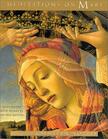
Behold the Mother
Is there a more remarkable spiritual writer today than Kathleen Norris? And how full of paradoxes she is "containing multitudes," to take a leaf from Walt Whitman. Coming from what she calls a "thoroughly Protestant background," her meditations have been both widely read and greatly appreciated by Catholics. A married woman, she has provided readers with astonishing insights into religious lifeand not incidentally, celibacy. A poet by trade, she writes prose like the proverbial angel.
A consistent theme that emerges in Ms. Norris’s writings is the variety of roles assumed by women throughout church history. It is not surprising, then, that she returns again and again in her books to the subject of Mary. Her most recent book, Amazing Grace, for example, includes a lyrical description of the Mother of God as a "biblical interpreter," one who kept the Word of God alive in her heart and, for a time, within her body. Indeed, given Ms. Norris’s abiding interest in the early church, in Scripture, in Catholicism, in the spiritual heritage of medieval abbesses and sisters, and in the experiences of women in general, Mary would seem to be a quite natural subject for this "thoroughly Protestant" author.
That Kathleen Norris has not written an entire book on Mary is an oversight now happily righted by Viking Press, which has just published a richly illustrated book called Meditations on Mary, collecting the author’s Marian writings under a single roof, as it were.
Accompanying Ms. Norris’s texts and the relevant Marian Gospel passages are a full measure of gorgeously reproduced images. Among them, Raphael’s "Madonna Sistina," in which a triumphant Madonna floats above a pair of winsome (and often reproduced) angels; Fra Angelico’s "Crowning of the Virgin," where a bevy of saints dressed in the painter’s favorite tints of azure and rose pay homage to the Queen of Heaven; and the haunting "Ecce Ancilla Domini," a rather less well known treatment of the Annunciation by the pre-Raphaelite master Dante Gabriel Rosetti. Here, a frightened young Mary sits, almost cowering on her simple bed, before Gabriel, from whose feet emanate orange tongues of fire.
Indeed, the casual bookbuyer will be excused from thinking that this book is merely another collection of pretty religious pictures: a "gift book," to use a faintly disreputable phrase. And pace Raphael, Fra Angelico and Mr. Rosetti, but the real masterpieces of this book are Ms. Norris’s lapidary prose and her meditations on the Virgin.
The essays begin with "Virgin Mary, Mother of God," in which Ms. Norris states bluntly that in the 1950’s, "when I was receiving religious formation in Methodist, Congregational and, in the summer, Presbyterian churches, Mary was more or less invisible to me." Yet as she discovers herself spending more time at Benedictine abbeys, she increasingly finds in Mary a comforting presence, and reflects on the capaciousness of Marian devotion in the Catholic church. "There’s a lot of room in Mary," she realizes. Ms. Norris also handles the often difficult topic of the Annunciation with great grace and clarity, linking Thomas Merton’s famous description of contemplative prayer as the point vierge in human life with the virginity of Mary. And in the chapter entitled "Dogma" she confronts what she called in her book Amazing Grace one of her "scariest religious words," that is, words or phrases that initially repelled her, but which now exert a great deal of fascination.
Overall, Kathleen Norris’s Mary is a vibrant, independent and entirely human woman whose daring fiat changes human history. She is astonishingly universal in her appeal: to educated Westerners seeking models of women in the contemporary church; as a symbol of liberation to the oppressed in Central America (Norris reminds us that, not too long ago, the public recitation of the Magnificat was banned by a fearful government in Guatemala); to resistance-minded Poles in the 1980’s; to cloistered monks in North Dakota; and to an elderly woman in India, who tells the author: "I’m not Christian, but I love her."
Kathleen Norris’s great gift, amply demonstrated in this slim volume, is a talent for making hidebound ideas come alive, complicated dogma seem utterly obvious, and the transcendent, if not accessible, then at the very least, closer to us. This she does by celebrating the world around us and the nearness of a God who continues to create. Moreover, she sees no need to obfuscate this message in abstruse jargon or cloudy theologisms. In a speech last fall at Union Theological Seminary in New York City, she recalled a comment from another theologian, which drew gales of laughter from the audience. "If we were always meant to understand God in the abstract," she said, "Mary wouldn’t have had a baby, she would have written a book."
Meditations on Mary is a wonderful way to ponder more deeply through art and artful words the mystery of Miriam of Nazareth. Needless to say, Mary never did get around to writing a book (though one tradition has it that she helped Luke write his). Contemporary Christians can be glad, however, that Kathleen Norris has written quite a few, and hope that she will continue to do so frequently.
This article also appeared in print, under the headline “Behold the Mother,” in the February 19, 2000, issue.








